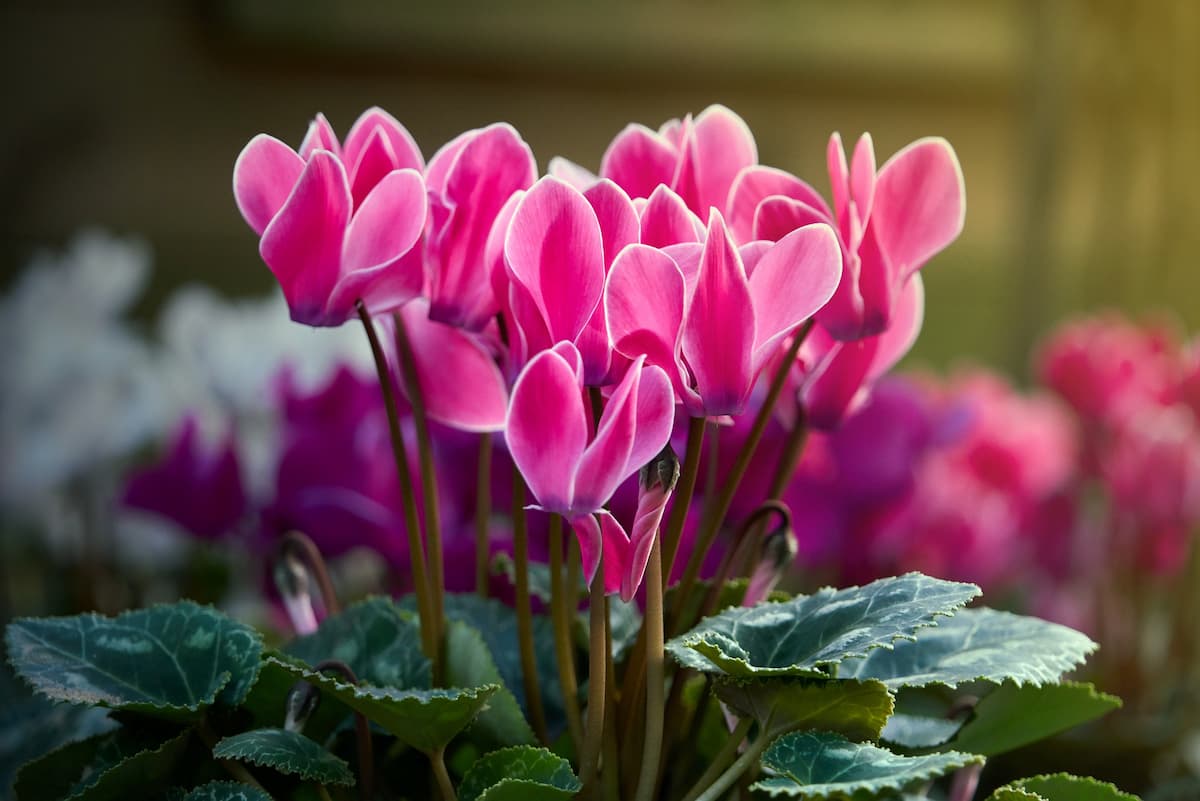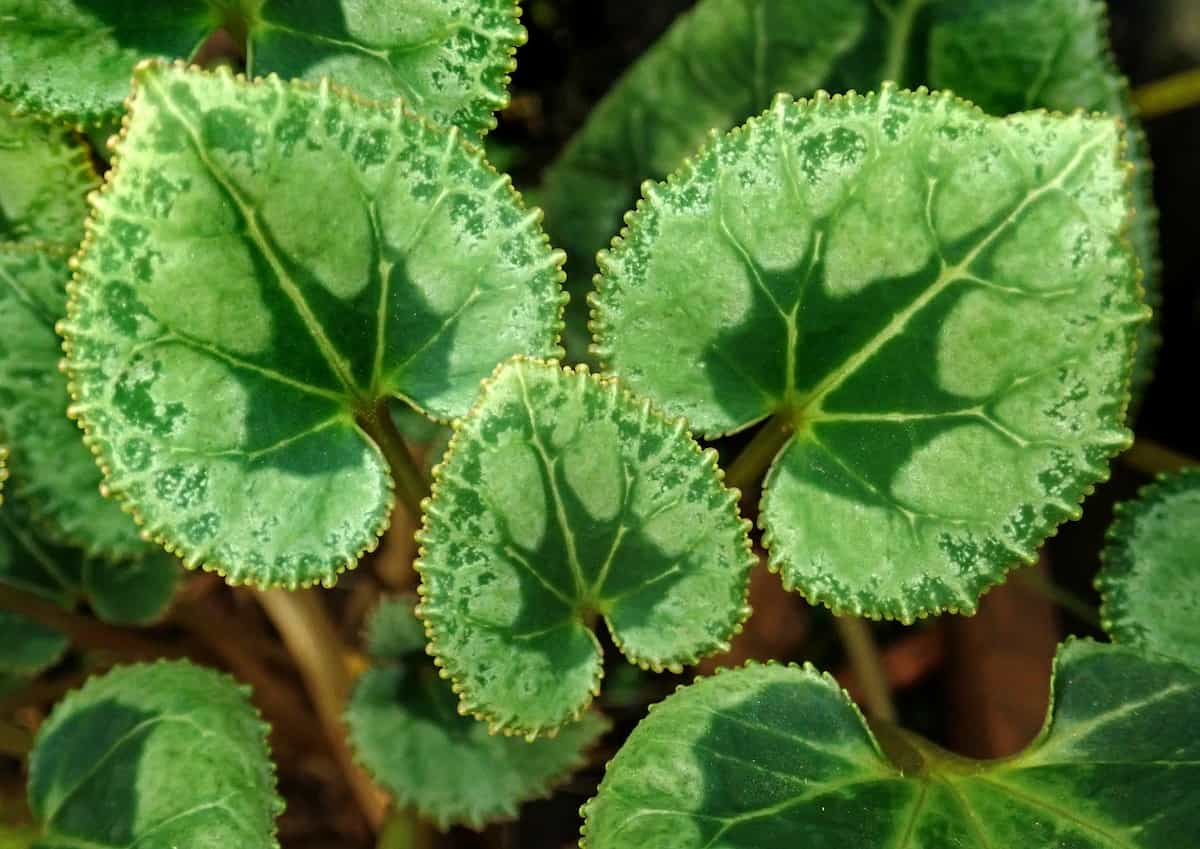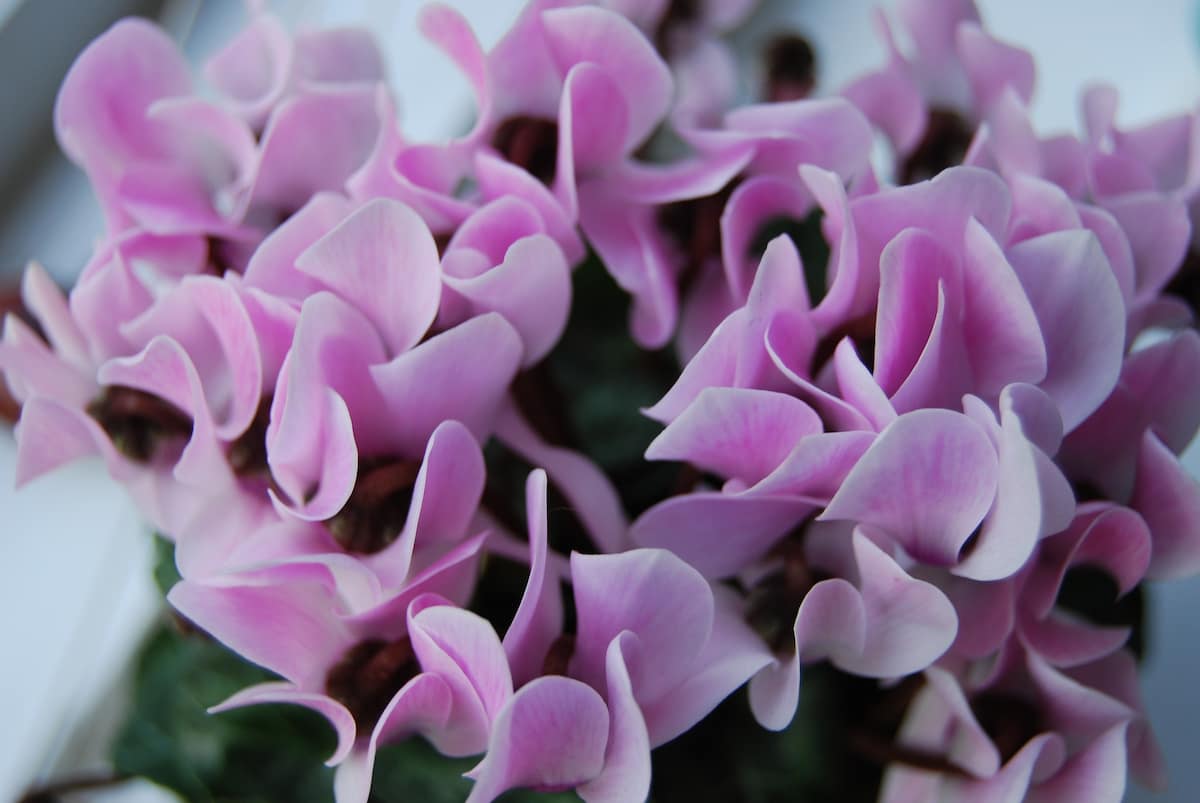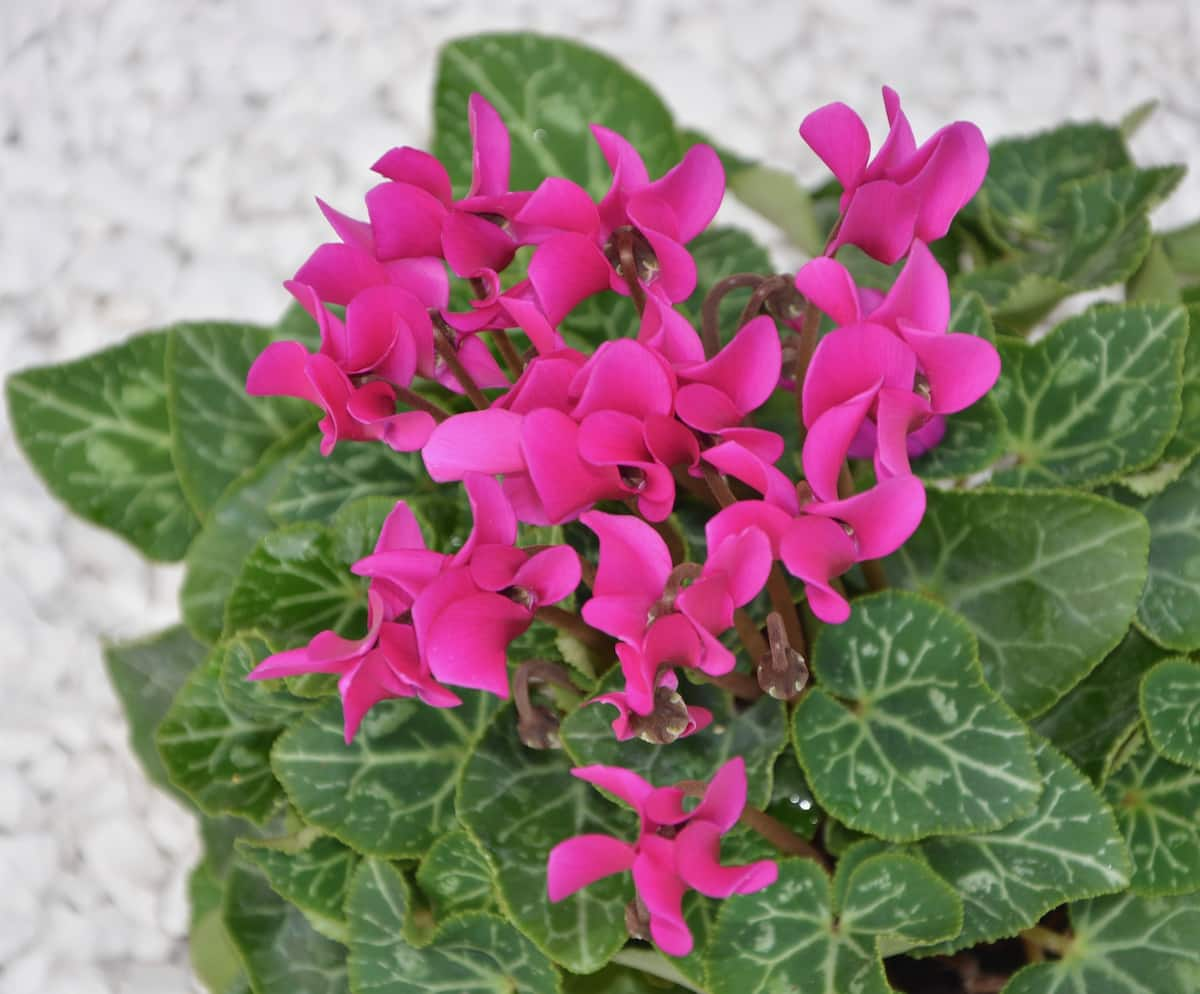Cyclamen is the most popular plant for home gardeners. They make an attractive addition to any home, are easy to care for and provide impressive flowers in return. However, if you’re new to growing Cyclamen indoors, there are a few things you need to know. Cyclamen are perennials that grow in temperate climates. They have an upright habit and are covered with small, white, or pink flowers.

Cyclamen are one of the most rewarding plants you can grow. They come in various shapes and sizes, provide beautiful flowers year-round, and are relatively easy to care for. They enjoy partial to full sun, moist soil, and a well-drained mix. As long as you provide them with the right conditions, they will grow well and produce beautiful flowers year after year.
How to grow and care for cyclamen indoors
Cyclamen varieties
Alpinum
The alpinum is a taller variety with narrower leaves and more flowers. Its flowers are typically pink or purple, and its leaves are slender or broad. Alpinums are generally easier to grow than cypripedium, which has larger flowers and foliage that is somewhat coarse in texture.
Cypripedium
The cypripedium is one of the more popular varieties of Cyclamen, with large, brightly colored flowers that can vary from yellow to red to white. Its leaves are broad and folded lengthwise along their center line, making them look almost like petals. Cypripediums are usually easier to grow than alpinums, but they require more attention in watering and fertilizing.
Persian Cyclamen
There are many types of Cyclamen, each with unique features. Persian Cyclamen is one of the most famous types of Cyclamen. It has soft, velvety skin, usually a light pink or lavender. The flowers are typically small and have a sweet fragrance.
In case you missed it: How to Grow and Care for Bleeding Heart Plant: A Beginners Guide

Climate suitable for growing Cyclamen
Cyclamen is a popular houseplant that can be grown indoors, though they do best in warm, sunny areas. They require very little water. Cyclamen grow slowly but make a beautiful showpiece. Cyclamen are sun-loving plants that need at least six hours of direct sunlight daily to grow and thrive.
If your Cyclamen is in a window, move it to a sunny spot outdoors during the summer. Cyclamen grow best in temperatures between 15 to 26°C, with a humidity level of 50 to 70 percent. They require light exposure for the leaves to photosynthesize, so place them in a sunny location or keep them near a window during the day.
Soil requirement for growing Cyclamen
Cyclamen are bulbs that need soil with good drainage and plenty of organic matter to thrive. You should plant in moist, well-drained soil amended with compost or aged manure. Water Cyclamen sparingly during the growing season; allow the top 3-4 inches of soil to dry before watering again.
They are capable of thriving in various climates but do best in areas with moist, cool summers and mild winters. When growing Cyclamen indoors, it is important to keep them warm and humid; misting them daily or keeping the plants close to a heating pad will help to achieve this.
In case you missed it: How to Grow and Care for Bloodroot Plant: A Beginners Guide

Water requirement for growing Cyclamen
Cyclamen need a lot of water to grow well. They should be watered daily during the growing season and every two weeks or so during the winter. Cyclamen are extremely drought-tolerant plants, requiring only 1-2 inches of water per week. They can be grown in various conditions, from mild climates to warm coastal areas. To begin growing Cyclamen indoors, you must acquire a potting soil mix specifically for Cyclamen.
The mix should contain sand, peat moss, and chopped bark to provide proper drainage and fertilizer absorption. Cyclamen prefer light, filtered exposure, so place your pot on a windowsill or in a sunny location. Water the plant sparingly during the first few weeks until the root system has established itself. Once the plant has taken hold, gradually increase water rates by half or more each week until they reach their desired level. Be sure to provide regular misting sessions with room temperature water to help prevent foliage scorch and promote growth.
Pot size required for growing Cyclamen
If you were wondering how much pot size is necessary for growing Cyclamen, the answer is that it depends on the variety of Cyclamen you are growing. Cyclamen are a popular flower that many people grow in their gardens. They come in various colors, such as pink and purple, and are easy to care for.
Cyclamen are also very sensitive to pot size. To grow Cyclamen successfully, you need a pot at least 15 inches in diameter and six inches deep. This is because Cyclamen needs room to spread out its roots. Too small of a pot will constrict the plant’s growth, while a pot that is too large can cause the roots to dry out.
In case you missed it: How to Grow and Care for Ocotillo in Pots: A Beginners Guide

Propagating Cyclamen
From cuttings
Cyclamen are hardy succulents that can be propagated easily from cuttings. Prepare the rooting medium by mixing a peat-soil mixture with water to make a slurry and then soaking the cuttings for about an hour. Next, make several small cuts into the cutting stem, and insert them into the prepared rooting medium. Ensure the cutting is well covered in the rooting medium, and keep it moistened with a water vaporizer or sprayed regularly. Propagate Cyclamen indoors during winter months in climates with mild temperatures.
From division
You must purchase a Cyclamen cultivar suited to your climate and growing conditions to propagate Cyclamen. Once you have your Cyclamen cultivar, divide the plant’s root ball into small pieces and soak them in cold water for 24 hours. After soaking, place the pieces of the root ball in a pot with fresh soil and water. Make sure to distribute the roots evenly throughout the pot. Propagate Cyclamen by rooting cuttings from healthy plants in late summer or early fall. Cuttings should be about 2 inches long and placed in a pot of soil with fresh water.
From seed
Cyclamen are perennials that can be propagated from seed. Separate the ripe fruit into two parts, discarding the seeds. Soak overnight in warm water to soften the flesh. Let cool slightly before transferring to a container. Fill each container half full of mixture and store in a dark spot for 2-3 weeks until roots form. Water regularly until plants reach the desired height.
Transplanting Cyclamen seedlings
When it comes to Cyclamen, the options for growing them are endless. Cyclamen seedlings can be transplanted at any time of the year, but transplanting in the early springtime is recommended so that your plants establish themselves before the summer heat arrives. To transplant Cyclamen seedlings, ensure they are well-watered and planted in damp but not wet soil.
Once planted, give your plants plenty of sun and water until they are established. The key to successful Cyclamen garden care is consistency keep up the good work by watering and fertilizing as needed, and you’ll be rewarded with beautiful blooms next season.
In case you missed it: How to Grow and Care for Clematis: A Beginners Guide

Cyclamen plant care
Fertilizer requirement for growing Cyclamen
Cyclamen is a tender perennial flower and will do best in soil with some organic matter. Fertilizer for Cyclamen can be applied during the growing season, but be sure to follow the instructions on the specific product you are using. Cyclamen grown indoors should be fertilized approximately every two weeks during the growing season, starting early spring and continuing until late fall. A good all-purpose fertilizer would be a 20-20-20 formula. When fertilizing Cyclamen, wet the soil surface before applying the fertilizer.
Cyclamen also benefit from fertilizer in the early stages of growth. Once they reach maturity, they will need less fertilizer. Using the right type of fertilizer for Cyclamen is important, as over-fertilization can damage plants. Use a balanced formula that includes both nitrogen and phosphorus. Fertilize Cyclamen in the early stages of growth when the leaves are small and beginning to form. Maintain a consistent fertilization schedule throughout the growing season.
Pruning Cyclamen plant
Dig up the old bulb and remove all dead leaves and roots. Cut off about one-third of the new growth from near the ground. This will keep your plant from becoming leggy as it grows to new roots. Cyclamen can be pruned in spring, summer, or fall. Prune Cyclamen is moderately in the early stages of growth to encourage bushy growth. Later, when the plants are larger and have developed a thicker stem, cut back hard once or twice per year to maintain a neat appearance. Remove any remaining dead branches and foliage in late autumn or winter after the flowers have faded.
Cyclamen care in winter
Winter is a good time to grow Cyclamen as they do not require much water or fertilizer and will not suffer from cold weather damage. Plant your bulbs in an evenly moistened soil mix. Make sure the soil is well-drained and doesn’t sit in water pools. Water your Cyclamen sparingly during the first few weeks after planting, only enough to keep the soil wet.
After that, allow the soil to dry out between waterings until winter arrives. Keep your Cyclamen warm and humid during the winter by placing them inside a protected container (a plastic tub works great). You can also place them near a radiator or window if they are outside in cold weather climates.
Repotting Cyclamen plant
To repot Cyclamen, start by removing any old soil and compost. Loosen the roots with your fingers and gently spread them out in the new pot. Fill in any gaps with fresh soil, and pack it firmly. Pour enough water into the pot to cover the roots. Replace or refill the saucer to keep it moist but not soggy.
In case you missed it: How to Grow and Care for Honeysuckle: A Beginners Guide

Pests and diseases of Cyclamen and their control
Cyclamen rust is a fungal disease that can attack the leaves of Cyclamen, causing them to turn yellow and curl. Cyclamen blight is a bacterial disease that can also affect Cyclamen leaves. Both diseases can be difficult to control, but Cyclamen plants can often remain healthy with early detection and treatment. Other pests that may afflict Cyclamen include aphids, scale insects, and thrips. Vigilance is key when dealing with these pests, as even small numbers can cause significant damage.
There are several methods of controlling Cyclamen pests and diseases. Cultural methods such as water management and pruning can help to prevent or suppress pest populations. Chemical methods such as applications of insecticides or fungicides may also be used, depending on the type of pest involved and the severity of the problem. Monitoring Cyclamen plant health regularly is essential for effective pest control; if problems do arise, proper treatment will generally result in restored plant health.
Viruses can also cause problems for Cyclamen plants. Viruses can damage the plant’s cells and lead to reduced growth and yield. No one method is guaranteed to work for controlling viruses in Cyclamen plants; some effective tactics include using disinfectants or fungicides to kill the virus and protect against future outbreaks, using resistant varieties if available, or plant selection for resistance.
Conclusion
Cyclamen is a hardy perennial that can tolerate various soils and climates. Once established, Cyclamen require little care other than regular watering. However, if your Cyclamen is not thriving, there are some tips to help it get back on track. If you observe any signs of pests or diseases, take proper steps to prevent or treat them. Cyclamen are popular houseplants that can add color and texture to any room.
- Gardening Techniques in Planting Vegetables
- Where to Place Indoor Plants in Your Home
- How to Grow Tomatoes Organically at Home: A Comprehensive Guide
- Organic Gardening on a Budget: Low-Cost Methods and Materials
- Gongura Seed Germination and Planting Methods
- Cabbage Seed Germination and Selection
- Broccoli Seed Germination and Selection
- Asparagus Seed Germination and Variety Selection
- Seasonal Flower Gardening: Best Practices for Spring, Summer, Fall, and Winter
- How to Grow Hibiscus from Flower
- Plantation Ideas for Home Decoration: A Beginners Guide
- Flower Garden Designs and Layouts for Beginners
- Planting and Spacing Techniques in Papaya: A Beginner’s Guide
- Growing Gold: Essential Techniques for Planting Pineapples
- How to Make Kalanchoe Plant Bushy: Home Remedies and Solutions
- 11 Reasons Why Your Gardenia is Not Blooming: Home Remedies and Solutions
- Eco Elegance: The Guide to Designing a Drought-Tolerant Landscape
- Gardening on a Slope: Strategies for Hillside Landscaping
- Nourish and Flourish: Top Organic Mulches for Thriving House Plants
- Everything You Want to Know about Indian Mogra Flower: Discover Uses and Growing
- Green Thumb Success: Expert Tips for Cultivating Greenhouse Pumpkins All Year Round
- Maximize Growth & Flavor: The Ultimate Guide to Companion Planting in Herb Gardens
- How to Control Rhododendron Problems Naturally: Home Remedies and Organic Ways to Fix Them
- Natural Magic: The Remarkable Benefits of Cinnamon for Plants
- Best Steps to Revive Dying Tulip with Natural and Organic Treatment
- 10 Reasons Why Your Angel Trumpet is Not Blooming: Remedies and Treatment
- How to Fix Periwinkle Leaf and Flower-Related Problems: Natural Remedies and Solutions
- How to Fix Zinnias Leaf and Flower Problems: Discover Natural and Home Remedies
- Organic Steps to Induce Lemon Tree Flowers: A Comprehensive Guide
- Bloom Booster: Crafting the Perfect Homemade Bougainvillea Fertilizer
- Optimizing Growth: A Guide to Applying NPK Fertilizer for Potted Plants
- 10 Best Homemade Fertilizers for Rubber Plant: DIY Recipes and Application Method
- How to Boost Female Pumpkin Flowers: Effective Steps for More Flowers and High Yields
- Transform Your Indoor Garden: Top Benefits of Pink Salt for Houseplants
- 10 Best Homemade Fertilizers for Peacock Plants (Calathea): Easy DIY Guide
- Unlock Blooms: 9 Reasons Why Your Potted Chrysanthemum is Not Blooming